Natural solid objects known as meteoric bodies, or meteoroids, make their way towards the Earth’s atmosphere at an astonishing speed exceeding 150,000 km/h. As they enter the atmosphere, they experience friction which results in intense heat and combustion. Astronomers refer to the visible trail left by a meteoroid as a meteor, with the brightest examples known as bolides, while regular individuals commonly refer to it as a shooting star.
Although these celestial phenomena resemble stars, they are in fact only the size of small pebbles, or even grains of sand. Nonetheless, many choose to believe that making a wish during the fleeting moment when a silvery streak traverses the night sky guarantees the fulfillment of that desire.
What is the Perseids Meteor Shower?
The Perseids meteor shower is a phenomenon where particles from a comet or asteroid create a trail in space that follows their orbit. When the Earth crosses this orbit, we are able to observe a stunning display of shooting stars.
Among the numerous meteor showers, the Perseids is known for being one of the brightest and most regular. Its existence was first documented in ancient Chinese chronicles dating back to the early years of our era. In southern Europe, this meteor shower is often referred to as the “Tears of St. Lawrence,” as its peak activity coincides with the celebration of the martyrdom of St. Lawrence. The official discovery of the Perseids is credited to the Belgian scientist Adolphe Ketle, who recorded the phenomenon in 1835.
Why is August the Best Time to Observe the Perseids?
The Perseids meteor shower is caused by the debris left behind by Comet Swift-Tuttle (also known as 109P). While the comet itself only comes close to our planet once every 133 years, we pass through its tail every year during the second half of summer. As a result, the month of August is the prime time to witness this celestial spectacle.
This year, the Perseids will be visible from July 14 to September 1, with the peak viewing period occurring between August 12 and 13. During this night, you can expect to see an average of 50-75 meteors per hour, visible to the naked eye as they burn up in the Earth’s atmosphere. The Perseids are known for their impressive display of bright meteors, with some even rivaling the brightness of Venus.
Optimal Time for Observation
After reviewing the weather forecast, select a clear evening for your astronomical adventure, preferably around August 12-13. Begin observing the sky at sunset, but the most breathtaking sights will be visible after nightfall. It is advisable to venture far from the glare of city lights, so be sure to consult a light pollution map beforehand.
The quality of your viewing experience is also influenced by the brightness of the Moon, but we are fortunate this year. During the peak of the Perseids, only 10% of the Earth’s satellite will be visible, and a new moon is expected on August 16.
Where and how to search
When observing a meteor shower, it may seem like the meteors are originating from a specific point or area in the sky, known as the radiant. The radiant for the Perseids meteor shower is located near the Perseus constellation. However, it is not necessary to fixate on the radiant, as the meteors will be visible in various parts of the sky. You can simply look towards the zenith or towards the northeast.
Allow your eyes to adjust to the darkness and adapt to night vision. If you plan on using your cellphone, it is recommended to switch it to night mode. Additionally, bring a flashlight with a red light to minimize the impact on your night vision.
What to bring with you
To make the experience of observing the Perseids more comfortable, it is recommended to bring warm clothes, a hat (even if it is hot in August), a thermos with your favorite hot drink, and a folding chair. Optical devices such as binoculars or telescopes are not necessary, as the Perseids can be easily seen with the naked eye.
To help you locate constellations and identify stars and planets, you can use apps such as skEye, Star Walk 2, or Sky Tonight.
If you want to capture the Perseids on camera, it is advisable to use a tripod or a stable surface. It is also recommended to use a delay function to avoid shaking the camera when taking the picture. This feature is available in both cameras and smartphones. Set the focus to infinity and switch the camera to manual mode.
Mastering Astrophotography: Capturing the Wonders of the Night Sky
Expert Insights from Vladimir Antropov, Renowned Photographer
Capturing the mesmerizing beauty of the starry sky requires dedication and skill. To achieve a remarkable photograph, ideal conditions are essential: a clear sky, minimal light pollution, and the absence of any prominent objects such as the moon or artificial light sources.
Handheld photography won’t suffice; employing a tripod or a stabilizing device is crucial. It is also advisable to use a delay feature to prevent any sudden movements during the shutter release. This feature is available in both traditional cameras and modern smartphones. Additionally, adjust the focus to infinity and switch to manual mode (M or Pro) for greater control. Opt for the widest aperture setting (the lowest number on the scale), increase the ISO sensitivity to the maximum, and experiment with shutter speeds starting from 10 seconds.
Top 5 destinations for observing the Perseids meteor shower
Krasnaya Polyana
The Perseids meteor shower attracts numerous astronomy enthusiasts and romantics to the Krasnaya Polyana resort every year. This year, the “Perseids Starfall” high-altitude festival will take place from August 5 to 24. The festival features informative lectures on astronomy and captivating performances of modern ethnic music. The event will be held at the CAMP2050 camp, which offers both tents and comfortable accommodations.
Altai Mountains Chui Steppe
Situated at an elevation of approximately 1,800 meters above sea level, on the border with Mongolia, is the breathtaking Chui Steppe in the Altai Mountains. Here, the sky feels within reach, while civilization remains distant. The climate is characterized by dryness, with clear skies that allow the sun to shine for 300 days a year, creating a spectacle of diamond-like brilliance.
Various travel companies specialize in organizing summer tours to the Altai region, with a focus on astronomy. During the day, visitors can engage in a multitude of activities, including exploring stone sculptures and ancient rock carvings, discovering the diverse flora and fauna, and embarking on exhilarating treks that offer panoramic views of the majestic snow-capped peaks.
Arkhyz
Arkhyz is known for having the darkest sky in the country and the air is incredibly clear. This is why the largest observatory of the Russian Academy of Sciences was constructed here. In the month of August, you have the opportunity to spend a whole week living on the observatory’s grounds and fully immerse yourself in the world of space exploration with the Astroverts club.
If you’re looking for an alternative experience, you can combine your passion for the sky with a cultural event. On August 13, the mountain resort of Arkhyz will be hosting the Other Sound festival. The festival program includes informative lectures and hands-on master classes, fascinating excursions to ancient Alanian temples and a chance to visit the observatory. Plus, there will be a captivating live string concert on top of Mt. Arkhyz.
Ladoga
The Sky of the North stargazing festival (Aug. 5-13) is held in an area with minimal electric light. Prepare for it like you would for a camping trip and bring thicker foam pads. You will have the opportunity to lie on Ladoga’s sandy beach and gaze at the sky, while enjoying live music and storytelling.
This gathering is not only about astronomy (although the Asterion club will provide powerful telescopes), but also about self-discovery in the vast cosmos. At night, everyone will have the chance to admire the stars, and during the day, there will be themed tents along the shore. These tents will host magical theater performances, yoga and osteopathy sessions, master classes on amulet weaving and threads of destiny, as well as evening ecstatic dance accompanied by the chants of the Chukchi and Koryaks, and much more.
Orel Polesie National Park
These protected areas in the Orel region are conveniently located near Moscow, only a five-hour drive away. Join Astro Travels on their August 12-14 excursion and experience not only stargazing, but also the opportunity to observe planets, star and globular clusters, galaxies, and nebulae through one of the largest amateur telescopes in the country. During the daytime, you can also use the Coronado solar telescope to get a closer look at our radiant sun.
During the event, the knowledgeable host, a certified astronomy specialist, will provide participants with a comprehensive introduction to stargazing and astrophotography, as well as deliver several informative lectures.
For those unaware of the ancient belief, when a clear night reveals a shooting star in the dark sky, it was interpreted as a sign that someone has passed away. This superstition originated during a time when people had limited knowledge about the sky, perceiving it as a solid blue canopy resting upon the Earth. It was believed that these small lights attached to the sky, known as stars, represented each individual’s unique celestial body. The star would illuminate upon their birth and “fall” upon their death.
However, times have changed, and we now understand that each star is a massive celestial entity, often dwarfing our own sun in size. It is absurd to think that the birth of humans on Earth would coincide with the appearance of enormous celestial bodies in the universe. Consequently, there is no correlation between human life and the stars.
There are no actual “shooting stars” in the sky. In fact, we witness numerous “stars” falling from the sky every evening, while the constellations remain unchanged. What is the explanation for this phenomenon? The truth is, these so-called “shooting stars” are not related to genuine stars. They are simply tiny particles of matter that slightly disintegrate as they enter the Earth’s atmosphere from outer space. The scientific term for shooting stars is meteors.
Currently, scientific research has determined that there are numerous small solid particles – including small rocks, clumps, and various sizes of dust – dispersed throughout interstellar space. These particles often intersect with Earth’s trajectory and enter our atmosphere at incredibly high velocities, reaching tens of kilometers per second. When these meteoric bodies reach a height of 150-120 kilometers above the Earth’s surface, they encounter air resistance, resulting in the formation of a compressed air “cushion” in front of them. This air cushion causes the meteoric particles to undergo significant heating, transforming them into gaseous states, typically at an altitude ranging from 130-60 kilometers above the Earth’s surface.
It is important to note that the majority of these meteoric particles are of minimal weight, typically weighing fractions of a gram.
Occasionally in the sky, one can witness not just individual “shooting stars”, but an entire “star rain” phenomenon (Fig. 24). Of course, there is no magic involved here either. This celestial occurrence takes place when the Earth encounters not solitary meteoric particles, but entire swarms of these small particles. Often, they are the remnants of former comets. At any given moment during this time, dozens of fiery meteors can be observed. It is a truly memorable spectacle!
For example, such a grand “star shower” was observed in October 1933, as well as in October 1946.
Meteor showers, as mentioned earlier, can also occur due to the collision of the Earth with a comet’s nucleus. A particularly brilliant “rain” occurred in 1885 when the Earth encountered the remnants of comet Biela.
Fig. 24. Star rain (old drawing).
In previous centuries, the occurrence of “shooting stars” was associated with superstitious beliefs and seen as a sign of impending misfortune on Earth. With no understanding of the reasons behind this peculiar phenomenon, people resorted to far-fetched and fantastical explanations.
Nowadays, we not only comprehend the cause of this phenomenon, but also possess the ability to forecast future meteor showers.
It is now established that each year, during particular months of its orbit around the Sun, the Earth encounters the same clusters of meteoric bodies. For instance, from August 9th to 14th every year, the Earth crosses paths with a swarm of meteor particles. During this time, we can reliably anticipate the occurrence of faint “star showers”.
There are meteor streams that produce abundant “star showers” only once every few decades. This is the case with the meteor shower that originates from the constellation Leo – Leonids (from the word leo – lion). The Leonids create plentiful “star showers” approximately once every 33 years. Historians and chroniclers used to describe the Leonids as extraordinary “celestial visions”. In China, they have been observed for over 3,700 years.
April meteors (April 19-22) originating from the constellation Lyra – Liridae can sometimes generate spectacular “star showers”. The last such “rain” of Liridbyl occurred in April 1952.
Sometimes in the night sky, you can witness a mesmerizing event known as stargazing. There is a popular belief that if you make a wish while a shooting star disappears, your wish will come true. But what is the true essence of this phenomenon?
Do stars actually fall?
In astronomical terms, a star is a massive luminous sphere of hot gas, much larger than our planet. It is beyond imagination to fathom the consequences if a star were to actually plummet onto Earth. The Sun, our closest star, may not be the largest in the galaxy, but it dwarfs our planet by hundreds of times.
Shooting stars, also known as meteors, are celestial objects that become luminous as they pass through a planet’s atmosphere. This illuminating effect is a result of the intense heat generated from the friction with gases. Each day, millions of meteors traverse the atmosphere, but only a small fraction actually make it to the Earth’s surface, transforming into meteorites. Due to the presence of sunlight during the day, these meteors are not visible. However, during the night when the atmosphere becomes transparent, they resemble stars. Often, a brilliant trail can be observed trailing behind a shooting star, which consists of gas and minuscule particles of cosmic dust.
The warm nights towards the end of summer are truly enchanting. The air is filled with the fragrances of herbs and sun-drenched soil. Every now and then, the dark expanse of space is adorned with the dazzling streaks of falling stars, creating a mesmerizing spectacle.
Occasionally, nature puts on this “stellar spectacle” specifically for dreamers who believe that their deepest desires come true when shooting stars streak across the night sky.
Do shooting stars actually fall?
Fortunately, shooting stars do not actually fall from the sky during stargazing. Well, technically they could fall, but it would look quite different. In any case, what we occasionally witness in the summertime sky has nothing to do with these celestial objects.
A star is a gigantic mass of scorching-hot gas. Its size is incredibly immense. The nearest star to us, the Sun, falls into the category of medium-sized celestial bodies. However, it could fit several Earths within its boundaries. We can’t even begin to fathom the catastrophic consequences if objects of that magnitude were to periodically plummet onto our planet.
Scientists have provided an explanation that a star has the ability to “fall”, for instance, into a black hole or even onto a planet. However, the phenomenon that we commonly refer to as a shooting star has a distinct astronomical origin. It is inaccurate to label this occurrence as a shooting star, as this term was coined during ancient times when humanity possessed limited knowledge about the cosmos.
Something is constantly changing in the universe, with stars being born and extinguished, planets appearing and disappearing, and comets moving and collapsing. This “building material” is carried throughout the universe at incredible speeds, periodically settling on the surfaces of celestial bodies.
This collection of debris includes inconspicuous particles known as space dust, as well as larger objects called meteoroids. When these objects enter Earth’s atmosphere, they heat up and glow due to friction. This is why we see a bright flash in the sky, which we often refer to as the tail of a “falling” star.
What is a meteor shower?
A meteor shower is a phenomenon that occurs when large comets break apart, creating a cluster of various-sized particles known as a meteoric swarm. These particles, propelled by gravity, continue to travel through space in a scattered pattern.
If Earth happens to cross paths with one of these scattered patterns during its orbit, we can witness a meteor shower, also known as a starfall or a shower of stars, in the night sky.
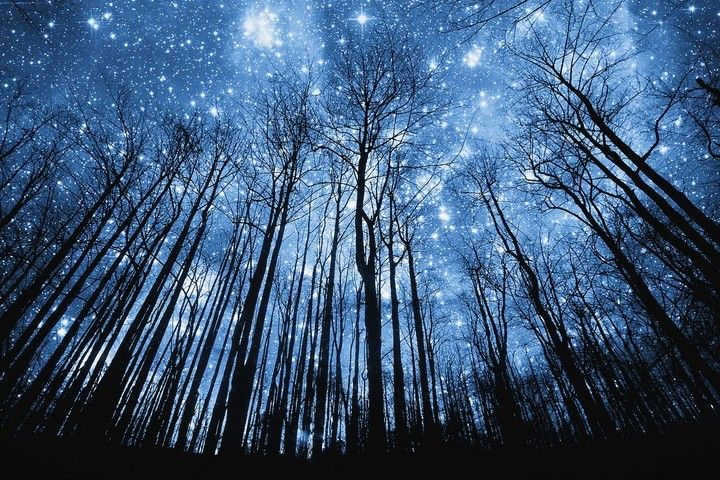
What distinguishes meteors from meteorites?
Meteoroids are typically fragments of asteroids and other large celestial bodies. In most cases, they disintegrate upon entering the Earth’s atmosphere, resulting in a phenomenon known as “meteors”. However, meteoroids that survive the atmospheric entry and land on the Earth’s surface are referred to as “meteorites”.
Meteorites can vary in size, with the largest one discovered by scientists weighing approximately 60 tons. The first recorded instance of a meteorite falling from the sky dates back to ancient Rome in 467 BC, as documented by ancient Roman historians.
When is the ideal time to indulge in stargazing?
Throughout the year, the Earth encounters various meteor swarms that follow a specific pattern. These swarms, also known as meteor streams, are named after the constellation where their “origin point” is located, known as the radiant. Although it appears from Earth that the meteors are coming from a single point, this is merely an optical illusion. In reality, the particles are traveling in parallel paths. This illusion is a result of the vast distances involved.
There are several meteor streams such as the Aquarid, Leonid, and Perseid streams. One of the most remarkable and intense meteor streams is the Perseid stream, which can be observed annually during the summer months in the northern latitudes of the Eurasian continent. The Earth passes through this meteor stream for an entire month, during which tens of thousands of meteors can be seen per hour. However, the peak period for observing the Perseid meteor shower is from August 12th to 14th.
Aside from the Perseids, there are several other meteor streams that occur annually. These streams occur at different times throughout the year, although not all of them result in a meteor shower. The Taurids and Orionids are among the most breathtaking, and they can be observed from October to the first half of November. Additionally, the Leonids and Geminids can be spotted in November and December, respectively.
For young men in love, it may be wise to consult the stargazing schedule and forecast to plan a memorable date. This newfound knowledge can be utilized to organize a romantic outing, where you can impress your partner by spotting a shooting star and giving them the chance to make a wish.
Video: The Phenomenon of Stellar Descending: Causes and Explanation
Each year, as summer draws to a close, a captivating and unparalleled spectacle unfolds: the descent of stars. This celestial phenomenon is accessible to all, leaving few unaffected by its splendor.
But what do ancient tales reveal about this mesmerizing event?
Throughout history, the phenomenon of a shooting star has been associated with countless signs and beliefs. It is widely known that when a star falls from the sky, one must make a wish, as it is believed that it will come true. An ancient tale tells of a personal star that each individual possesses. This star illuminates the sky at the time of a person’s birth and, upon their passing, descends to the ground to be extinguished. During this fleeting moment, the star grants any wish made by the individual. If a person fails to make a wish, it suggests either a lack of desire or that their wish may not be fulfilled.
Another legend suggests that a shooting star represents an angel rushing to Earth to bestow a soul upon a newly born person. These stars are believed to be disembodied souls, which acquire physical form upon reaching the Earth.
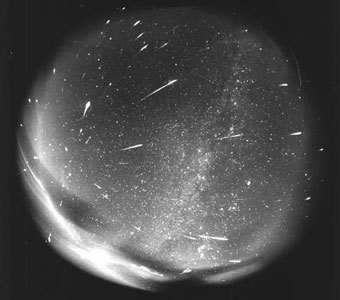
During ancient times, there was a widespread belief that falling stars were actually arrows launched by the Gods in their battle against evil forces. Different cultures had their own interpretations and superstitions surrounding shooting stars. For example, Muslims saw them as representations of an evil enemy, while the Slavs associated falling stars with death. In Scandinavian countries, it was believed that a falling star represented a forgiven soul. Furthermore, there was a popular superstition that if a person witnessed a falling star, they would become ill and never fully recover.
Nevertheless, it has been widely established in scientific circles that stars do not descend randomly. A star is essentially a massive sphere composed of scorching gases. Given that stars are several times larger than Earth, it is quite challenging to conceive the consequences if hundreds of these celestial bodies were to unexpectedly erupt and soar towards our planet. Nevertheless, there is undoubtedly something descending against the backdrop of the pitch-black sky, and numerous individuals have borne witness to this captivating spectacle.
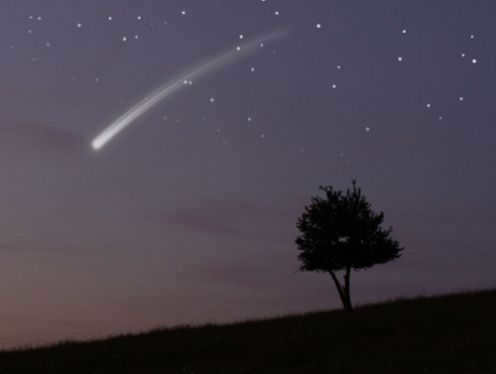
Actually, a shooting star, which is commonly referred to, is merely a rock that has traversed the Earth’s atmosphere. As it travels, it becomes so hot that it starts to emit light and leaves behind a luminous trail. Eventually, the rock completely incinerates, leaving no trace behind. These rocks are known as meteors. Each day, thousands of these meteors streak across the sky. Some rocks that successfully make it to Earth are called meteorites. The heaviest meteorite ever discovered landed in Africa and weighs 60 tons.
Why is it during the month of August that the most spectacular meteor showers can be observed? The reason is that during this time, our planet passes through a region of space filled with dust particles. When these tiny particles enter Earth’s atmosphere, they burn up and create the mesmerizing effect of shooting stars. This breathtaking phenomenon can be witnessed from any location on the globe, and no special equipment is required. The next time a comet will come close to Earth will not be until 2126. Until then, we will have the opportunity to witness other meteor showers, although they may not be as bright and awe-inspiring.
There is a belief that if you manage to make a wish before a shooting star touches the Earth, it will come true. This belief has its roots in ancient times. The sky has always held an air of mystery and captivated us with its unknown wonders.
Some people thought that the shooting star was a celestial entity descending to Earth in order to enter a recently born child. Others firmly believe that it arrives at the moment of conception to bestow a new life.
However, according to the ancient Maori belief, the falling star represents the departure of a soul from the body of a deceased individual. As we gaze up at the sky, we witness its journey from the realm of the living to the realm of the afterlife. In the Western regions of China, it was believed that each person possesses their own personal star. It was customary to pray to and show reverence towards this star. It was believed that upon death, the star descends from the heavens and departs alongside the deceased.
Where does the falling star go?
Actually, the reality is quite different. We have all learned since high school that stars do not actually fall. A star is actually a massive ball made up of hot gas. Furthermore, there is no scientific evidence to support the idea that souls enter or leave through shooting stars. However, it has been scientifically proven that what is commonly referred to as a shooting star is actually a stone or fragment from a celestial body that is flying through space. When these stones or fragments enter the Earth’s atmosphere, they become so hot that they start to glow.
The force of friction is responsible for this phenomenon. However, due to the high temperature generated by friction, these fragments rarely reach the Earth’s surface. Instead, they burn up in the atmosphere without making contact with the ground. These fragments are actually formed in outer space when asteroids collide with one another. As a result of these collisions, numerous fragments are ejected in different directions, and some of them eventually make their way to Earth.
The Earth’s gravitational force attracts meteorites that are flying past at high speeds into the atmosphere. When multiple fragments from asteroids fall to Earth, it appears as though there is a shower of stars. In some cases, larger pieces of debris do not completely burn up and actually land on the ground as rocks. This transforms the star shower into a stone shower. Meteorites come in various sizes, ranging from the size of a pea to several meters in diameter. The largest meteorite ever recorded to have fallen on Earth was discovered in Africa and weighed approximately 60 tons.
The star stream is composed of ice and dust particles that have broken away from various comets. When the Earth passes through the trail of dust particles left by the comet, its gravitational force pulls these particles into the atmosphere. This results in the spectacular phenomenon of stargazing. Astronomers have long been able to predict the timing of this mysterious event. It is not necessary to use special equipment to observe the movement of comets and the fall of meteors. They can be easily seen from Earth with the naked eye.
When faced with the incredible phenomenon of night stargazing, the observer is filled with awe: the sight of numerous shooting stars is not a common occurrence every night.
However, abundant meteor showers are seasonal events. More often, we observe individual stars that briefly appear in the vast darkness of space and then disappear…
What causes stars to fall and where do they come from?
When we see falling stars, they are not actually stars, but instead, they are traces…
Stars cannot physically fall because their massive bodies are held in place by complex cosmic “mechanics”. The bright trace we observe is actually a meteor.
A meteor is essentially a trace left by incredibly small celestial bodies – fragments of asteroids and comets. These celestial bodies are referred to as meteoroids, and when they make contact with the Earth, they are known as meteorites.
The occurrence of meteorites
Comets and asteroids are continuously being exposed to various forces in space. They can collide with other celestial bodies, such as planets, causing their orbits to change. Additionally, they can be influenced by the solar wind, which can cause small particles to be torn off from their surfaces.
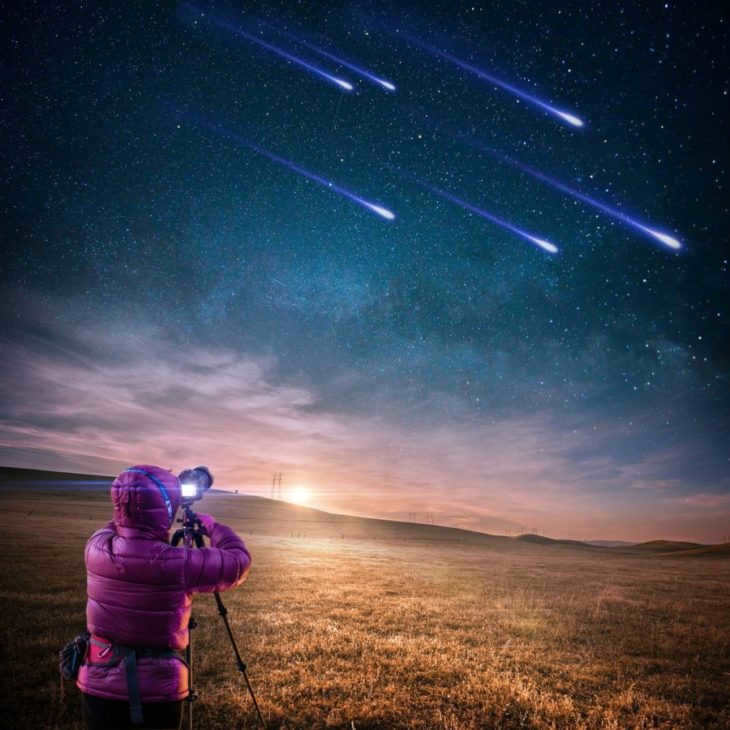
When fragments of comets and asteroids enter the atmosphere, they undergo a process of combustion. Some of these fragments burn up completely, while others may be propelled back into space. However, those with a greater mass will ultimately fall to the surface of the planet. This phenomenon is what creates the illusion of a shooting star.
It is worth noting that even small fragments burn up very brightly. A prime example of this is the Chelyabinsk meteorite, which recently fell to Earth. Recordings captured the immense flash of light that occurred prior to its descent.
Meteor Showers
Meteor showers are a fascinating phenomenon that occurs when meteors form into streams, creating stable groups that appear seasonally in our sky. Among the most well-known meteor showers are the Perseids, which occur in August and originate from the Perseus constellation. Another notable meteor shower is the Leonids, which take place from November 14 to 21 and come from the Leo constellation. Additionally, the Quadrantids, originating from the Volopassus constellation, can be seen from December 28 to January 7.
Scientists have identified 64 meteor streams with certainty, while around 300 others remain unconfirmed but not ruled out. Meteor showers are particularly awe-inspiring when we can witness up to 1,000 meteors per hour.
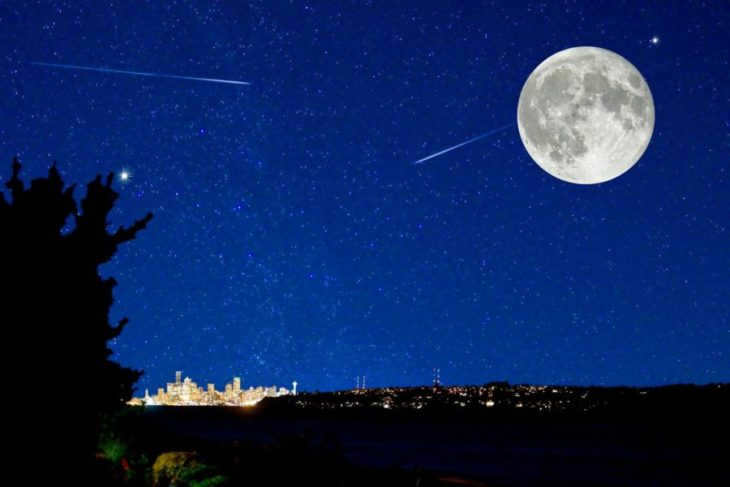
Meteoroids, which serve as the building blocks of meteorites, are composed of the same elements that are present on Earth. However, their alloys and combinations are unique and not found on our planet. Celestial bodies made of iron contain iron with traces of nickel.
Fragments of rocks are made up of nickel-infused iron and silicate minerals, such as olivines and pyroxenes. If you were to cut these fragments, you would be able to observe chondrules, which are granular inclusions, along the cut line.
Due to the fact that two-thirds of the Earth is covered in water, meteorites that make it to the planet’s surface often land in the oceans. However, scientists are particularly interested in the blocks that have penetrated several hundred meters or even kilometers deep into the Earth’s layers.
Astronomers diligently examine the composition of celestial bodies, from which they make astonishing revelations about their origins, the interconnected events and phenomena in the universe, which occurred in the distant past, are happening presently, and will occur in the future.
Fragments of meteorites are a valuable “commodity”. Authentic remnants can be sold at international auctions, fetching incredibly large amounts of money. As a result, the locations where meteorites have fallen are continually explored by “treasure hunters of the cosmos”.
Descending Stars: A Celestial Phenomenon
Meteorites, often referred to as “fallen stars,” are abundant celestial objects. In the realm of scientific knowledge, the colossal Goba meteorite stands out with a remarkable diameter of 3 meters. Weighing a staggering 60 tons, this extraordinary specimen descended upon our planet approximately 80,000 years ago, finding its resting place in present-day Namibia.

The Allende meteorite from Mexico is the most extensively studied. It is relatively young, having fallen to Earth in 1969, yet it is also one of the oldest in the solar system, with an estimated age of about 5 billion years.
On the other hand, the Murchison meteorite from Australia is not particularly notable for its size or age, but rather for its organic composition. Scientists have identified approximately 14,000 organic compounds in this meteorite, including 70 amino acids. Despite its age of 4.65 billion years, the Murchison meteorite provides strong evidence for the existence of life beyond our solar system.
The presence of these ancient meteorites with complex compositions suggests the possibility of extraterrestrial life. While meteorites fall to Earth, it is important to note that stars do not. If a star were to suddenly plummet to Earth, it would disintegrate into dust instantaneously. However, there have been cases where comets have reached the Earth’s surface, such as the Tunguska meteorite incident.
It’s actually a minuscule comet, meteorite, or merely a tiny pebble.
When people observe a light in the sky, they often jump to the conclusion that it must be a star.
If a meteorite exceeds a dozen meters in diameter and lands near or within a populated area, it can cause significant damage.
Contrary to popular belief, what we commonly refer to as shooting stars are not actually stars falling from the sky. Instead, they are stones from outer space. The reason these stones appear to burn like stars is because they ignite upon entering the Earth’s atmosphere and burn up completely before reaching the surface.
If we talk about stars, we are referring to celestial bodies (particles, celestial sheets) whose path intersects with the Earth’s path in both space and time. And they are called stars because the apparent size of a body burned in the atmosphere is roughly the same as the size of stars.
However, from a non-scientific perspective, people see falling stars as a symbol of dreams and wishes coming true, and they believe in miracles and the fulfillment of all their desires. On the other hand, scientifically speaking, falling stars are actually burning meteorites that descend to the Earth’s surface.
Fortunately, stars do not plummet from the sky.
However, small celestial bodies from our solar system, specifically meteors, meteorites, or bolides, do enter the Earth’s atmosphere. (Comets and asteroids, although also small celestial bodies, do not penetrate our atmosphere, as doing so would cause catastrophic damage to our planet).
So, what exactly distinguishes a meteor, meteorite, and bolide?
A meteor, which is a tiny particle about the size of a pine nut, burns up upon entering the atmosphere, leaving behind a luminous trail. Meteors are the ones we commonly observe. However, meteors never make it to the Earth’s surface.
A meteorite, on the other hand, is a celestial body that successfully reaches the Earth’s surface.
When a meteorite reaches the Earth, it often produces a loud noise and emits smoke, similar to what was witnessed over Chelyabinsk.
All of these celestial bodies follow their own distinct trajectories and often travel in groups. This is why we frequently see meteor showers in August.
By the way, astronomers who dedicate their entire lives to telescope observation may never have the fortunate opportunity to witness a falling meteor by chance. It brings immense joy to observe this phenomenon, and if an astronomer happens to witness it, they are automatically deemed a true astronomer.
Shooting stars are celestial bodies known as meteors. When they enter the Earth’s atmosphere, they become extremely hot and burn up, creating a luminous display. The fragments that manage to reach the Earth’s surface are known as meteorites.
Occasionally, it is possible to witness the spectacle of numerous bodies streaking across the sky, creating a mass glow. This occurrence is referred to as a meteor shower. The bright dots represent tens of thousands of debris bombarding the Earth’s atmosphere for an entire hour.
In 2013, a remarkable event occurred in Chelyabinsk when a star descended from the heavens and burst into a magnificent explosion. This extraordinary occurrence took everyone by surprise, as the morning seemed just like any other ordinary day. Astronomers have speculated that if this celestial event had taken place at night, the spectacle would have been utterly indescribable. However, even in the daytime, the brilliance was beyond comprehension, impossible to put into words. It was as if billions of luminous bulbs had ignited simultaneously, leaving many spectators temporarily blinded. This was the awe-inspiring effect of a shooting star.
Occasionally, in the nocturnal sky, we are fortunate enough to witness a wondrous phenomenon known as starfall. A popular belief suggests that if one makes a wish as the falling star vanishes, the wish will undoubtedly come true. But what is the true essence and origin of this enchanting occurrence?
Can stars descend from the sky?
A star, in the realm of astronomy, is an immense luminous sphere of heated gas, with dimensions that far surpass those of our planet. It is beyond comprehension to envision the consequences if, in fact, one of these stars were to descend upon the Earth. The Sun, our nearest star, is not the most colossal in the galaxy, but it still dwarfs our planet by hundreds of times in size.
The luminous objects that we commonly refer to as shooting stars are actually meteors that start to emit light as they traverse through the atmosphere of a celestial body. This luminosity is a result of their high velocity, causing them to become extremely hot due to the friction with the gases present. On any given day, an immense number of meteors travel through the atmosphere, but only a small fraction actually make it to the surface of the planet, transforming into meteorites. During daylight hours, the presence of sunlight obscures our ability to perceive these meteors. However, when the atmosphere turns transparent at night, they bear a striking resemblance to stars themselves. Frequently, a brilliant trail can be observed trailing behind a shooting star, which is essentially a collection of gas and minuscule cosmic dust particles.
What is the reason behind the negative connotation associated with Friday the 13th?
Shooting stars
Occasionally, a significant quantity of meteors make their way into the Earth’s atmosphere simultaneously, creating the impression of a cascade of glowing particles. In the field of astrology, this natural phenomenon is referred to as a “meteor shower”. The cause behind this celestial event is the crossing of the paths of a planet and a sizable cluster of cosmic particles, which are typically composed of the remnants of a comet. Just like all other celestial bodies, these swarms of meteors follow their own distinct orbits. As a result, their atmospheric collisions can be observed consistently at the same time each year.
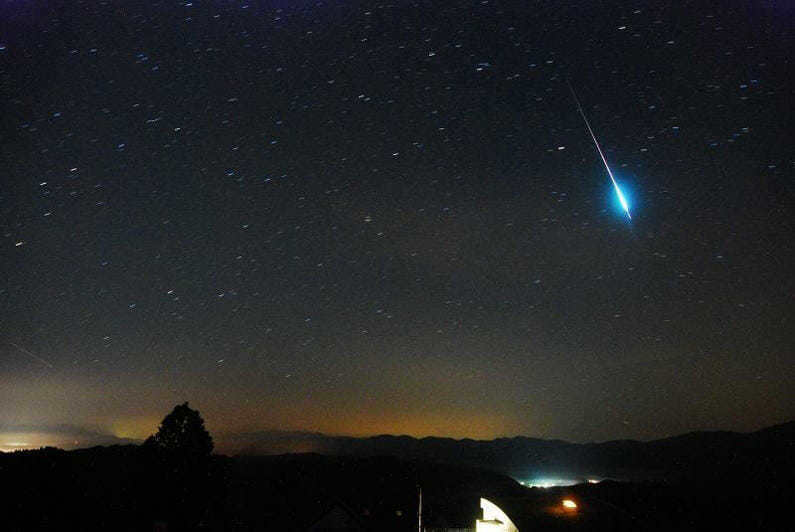
One of the most breathtaking and stunning celestial events takes place in the middle of August. This mesmerizing display of shooting stars is known as the Perseid meteor shower, named after the constellation Perseus. It is a result of the leftover debris from the Sfivta-Tuttle comet, which graces our skies approximately once every 135 years. While there are several other meteor streams that can be observed, none of them can match the intensity and brilliance of the Perseid shower.
The conclusion of each summer is indicated by a spectacular and unparalleled occasion: stargazing. This event is open to all and there is scarcely an individual who will remain unaffected by this spectacle.
What do the legends suggest about it?
Since ancient times, the descent of a star has been associated with a plethora of omens and superstitions. Even a child is likely aware that when a star falls, one must make a wish, and it will assuredly be granted. An age-old legend states that each individual possesses their own personal star. It illuminates the sky upon their birth, and upon their demise, it hastens to plummet to the earth and extinguish. In that moment, it fulfills any wish made by the person. If one fails to make a wish in time, it signifies that they do not desire something fervently enough, or their wish will simply not come to fruition.
As per an alternate story, a shooting star is believed to be a celestial being that descends to the Earth with the purpose of bestowing a soul upon a recently born human. In this context, stars represent disembodied souls that, upon falling to the ground, assume a physical form.
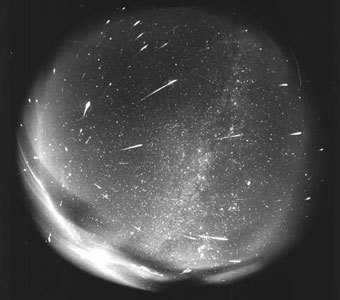
During ancient times, there was a widespread belief that falling stars were actually arrows shot by the Gods in their battle against evil forces. Interestingly, different cultures had their own unique superstitions surrounding shooting stars. For example, in the Muslim culture, a shooting star was personified as an evil enemy. Slavs, on the other hand, believed that a falling star was a sign of imminent death. In Scandinavian countries, it was seen as the soul of a forgiven individual. There is also a common superstition that if a person sees a falling star, they will become sick and never recover.
Nevertheless, it has been a well-established fact in the scientific community that stars do not descend haphazardly. Stars, in essence, are massive spheres of scorching gas. Given their immense size, which surpasses that of our planet several times over, it is quite challenging to fathom the consequences that would ensue if numerous of these celestial bodies were to suddenly erupt from the heavens and hurtle towards our world. Nonetheless, it is undeniable that something does indeed traverse the somber expanse above us, captivating the gaze of countless individuals who have been fortunate enough to witness this breathtaking spectacle.
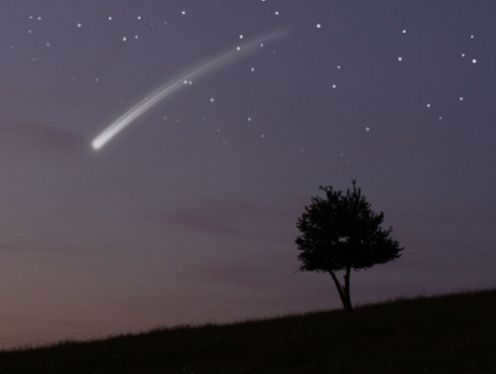
Actually, what we commonly refer to as a shooting star is actually a rock that has passed through the Earth’s atmosphere. As it travels, it heats up to such a high temperature that it starts to emit light and leaves a bright streak behind. Eventually, the rock burns up completely, leaving no trace. These rocks are known as meteors. Every day, thousands of these meteors streak across the sky. Some rocks that manage to survive the journey and land on Earth are called meteorites. The largest meteorite ever found fell in Africa and weighs a whopping 60 tons.
Why is August the month when you can witness the most prominent meteor showers? The reason behind this is that during this time, our planet crosses paths with a region filled with dust particles that are released into space. When these tiny particles enter Earth’s atmosphere, they burn up, creating a mesmerizing stargazing effect. This beautiful phenomenon can be observed from any location on the globe, and specialized equipment is not necessary. The next time a comet will come close to Earth will be in 2126. Until then, we will have the opportunity to witness other meteor showers, but they may not be as bright and awe-inspiring.
How magical are the warm nights towards the end of summer. The air is filled with the scent of grass and the earth, warmed by the sun. The bright tails of shooting stars occasionally illuminate the dark expanse of the night sky.
Occasionally, nature puts on this “stellar spectacle” specifically for those who believe that their deepest desires come true when stars descend to the ground.
Do stars actually fall?
Fortunately, stars do not physically fall during stargazing. Technically, they could fall, but the event would be quite different. Regardless, what we occasionally witness in the summer sky has no relation to these astronomical entities.
A star is a massive ball of scorching gas. Its size is incredibly immense. The nearest star to us, the Sun, falls into the category of medium-sized celestial bodies. However, it could easily encompass several Earths. One can only imagine the catastrophic consequences if objects of such magnitude were to periodically plummet onto our planet.
According to scientists, it is possible for a star to “fall” into a black hole or even onto a planet. However, the phenomenon we commonly refer to as a shooting star is actually of a completely different astronomical nature. It is incorrect to label this phenomenon as a shooting star, as this name originated in ancient times when people had limited knowledge about the cosmos.
There is a constant state of flux in the cosmos, with stars being born and extinguished, planets appearing and disappearing, and comets moving and collapsing. The remnants of this “building material” are scattered throughout the Universe at incredible speeds, occasionally “settling” on the surface of celestial bodies.
This accumulation of “debris” includes both inconspicuous particles, such as space dust, and larger objects, like meteoroids. When these objects enter the Earth’s atmosphere, they experience friction that heats them up to the point of glowing. This is why we see a bright flash in the sky, which is often mistaken for the tail of a “falling” star.
What is a meteor shower?
When large comets break apart, they often create a cluster of various-sized particles known as a meteor swarm. These particles, propelled by gravity, continue to travel throughout the universe in a plume-like formation.
If Earth crosses paths with one of these plumes during its orbit, we can witness a meteor shower in the sky, also known as a starfall or shower of stars.
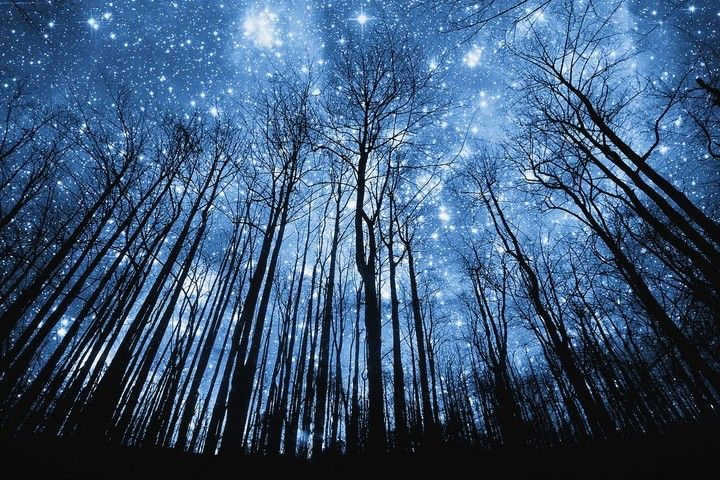
What distinguishes meteors from meteorites?
Meteoroids typically originate from asteroids and other large celestial bodies. Most of the time, they incinerate upon entering the Earth’s atmosphere, resulting in what is known as “meteors”. Meteorites, on the other hand, are the meteoroids that survive the atmospheric burn and make it to the Earth’s surface.
Meteorites can vary in size, with the largest one discovered by scientists weighing approximately 60 tons. The earliest recorded instance of a meteorite falling from the sky dates back to ancient Rome in 467 BC, which was documented by historians of that time.
When is the optimal time of year for stargazing?
The best time of year to admire stargazing is when the Earth intersects with meteor swarms, which occurs periodically. These meteor swarms are named after the constellation in which their “point of departure” is located, also known as the radiant. Although it may appear that the particles are traveling from a single point, they are actually flying in parallel. This optical illusion is due to the vast distance between the particles and the Earth.
There are various meteor streams, such as Aquarid, Leonid, Perseid, and others. One of the most impressive meteor streams is the Perseid stream, which can be observed annually during the summer in the northern latitudes of the Eurasian continent. The Earth passes through this stream for an entire month, during which tens of thousands of meteors can be seen per hour. However, the peak of meteor activity occurs from August 12 to 14.
Aside from the Perseids, there are a number of other meteor streams that occur annually. They take place at various times throughout the year, although not all of them result in a shower of stars. Some of the most remarkable ones include the Taurids and Orionids, which can be observed in October and the first half of November, as well as the Leonids and Geminids, which take place in November and December respectively.
For young men in love, it would be wise to carefully study the schedule of meteor showers and the forecast for their intensity. This newfound knowledge can be effectively utilized to plan the most impressive date. What could be more romantic than pointing out a shooting star to a girl and giving her the opportunity to make a wish?
The phenomenon of a shooting star has always fascinated human beings throughout history. It has been the subject of numerous legends and has been attributed with mystical powers. Even in the present day, when we have a better understanding of the cosmos, witnessing a shooting star still prompts people to make a wish, believing it will be granted. But what causes stars to fall? With our increased knowledge of the universe, we can now provide an answer to this age-old question.
Celestial Bodies in the Sky
In order to understand the phenomenon of falling stars, it is necessary to first comprehend what exactly we mean by “stars”. When observed from Earth, they appear as small, luminous points of light. These celestial bodies are scattered throughout the sky, forming intricate patterns that can only be seen at night.
In reality, stars are continuously emitting light. They are massive cosmic objects composed of hot gases, undergoing constant nuclear reactions. The process of transforming elements such as helium and hydrogen generates their radiant glow. Due to their great distance from our planet, stars appear as mere specks in the sky.
Among all the celestial bodies, the Sun stands out as the ultimate representation of a star. Its proximity to Earth allows us not only to witness its brilliant light but also to experience its intense heat. On its surface, the Sun’s temperature measures at 5,700 K, while deep within its core, it reaches an astonishing 15,700,000 K. Although stars, like other cosmic entities, are not completely motionless, their movements are far more gradual and serene compared to planets and comets. The perceived motion of stars across the sky is merely a result of Earth’s own movement in relation to them, and their true displacement can only be discerned over millions of years.
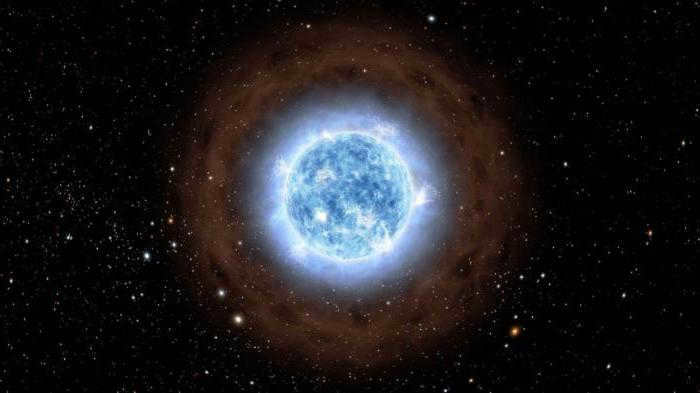
What causes stars to “fall”?
Stars are able to maintain their balance due to high internal pressure and gravitational forces. They do not actually fall, but the phrase “falling stars” originated from a time when all celestial objects were believed to be stars.
However, our planet is constantly bombarded by cosmic objects known as meteoroids. These meteoroids are composed of dust, rock fragments, and metals, which are remnants of comets and asteroids. When they enter Earth’s atmosphere at high speeds (over 13 km/s), they ignite and create streaks of light in the sky, commonly referred to as shooting stars. Most meteoroids burn up in the atmosphere, but larger ones are called bolides and occasionally manage to reach the Earth’s surface, where they are then referred to as meteorites.
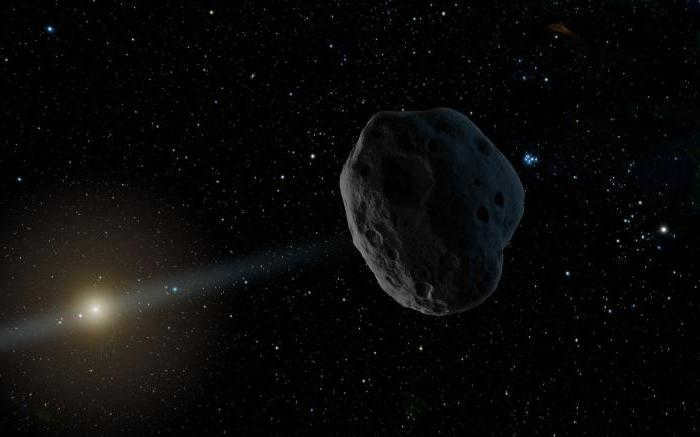
On occasion, the sky is graced not by a lone meteor, but by an entire stream or “star rain”. This spectacular phenomenon occurs when a comet ventures too close to the Sun and begins to shed its particles. These fragments continue to orbit the comet and occasionally intersect with the Earth, resulting in a dazzling display of shooting stars.
These “star showers” can be observed during specific times and in specific regions of the sky, often associated with nearby constellations. Some well-known meteor streams include the Perseids, Aquariids, Orionids, Leonids, Lyrids, Draconids, and many more. Currently, there are approximately 64 recognized meteor streams.
Perseids
What is the reason for stars falling during the later part of summer? In the month of August, the Perseids showcase a consistent starfall. The meteor shower has been visible near the constellation Perseus since July 17, although it is most prominent on the night of August 12-13. These meteors are created by the Swift-Tuttle comet, which was discovered in 1862.
This comet only passes by the Earth once every 135 years, but our planet encounters a trail of dust from its tail every year. The Perseids are recognized as one of the most potent meteor showers. During one hour of observation, it is possible to witness up to 100 meteors.
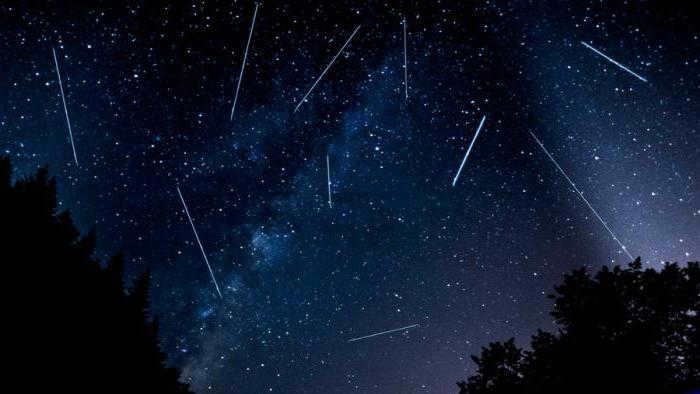
Orionids
The Orionids, which are created by Halley’s comet and will be visible again in 2061, are another well-known meteor shower. They are visible twice a year – in early May and in the 20s of October. During the autumn, they pass through the constellation of Orion, with the peak activity occurring on October 21. In the spring, they emerge from the direction of Aquarius and are referred to as Aquarids.
Draconids
The Draconids meteor shower is known for its variability. The intensity of the shower can differ from year to year. In 1933, stargazers were treated to a remarkable display of up to a thousand meteors per hour, while in 2011, the number of meteors didn’t exceed 300, which is still quite impressive.
The Draconids can be observed from October 6 to 10, with their peak activity occurring on October 8. They are visible in the Northern Hemisphere and are best observed in the pre-dawn hours. The Draconids are associated with the comet Giacobini-Zinner, which has an orbital period of 6.6 years. The comet is expected to pass close to Earth in September 2018.
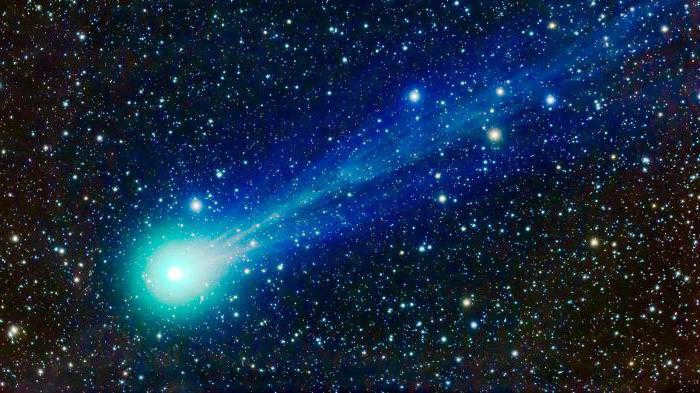
When stars descend from the sky, the phenomenon takes on a rather mundane nature, as they are simply space debris that burns up upon entering the Earth’s atmosphere. However, in the past, they were perceived quite differently. They were believed to be the fading souls of departed individuals or souls embarking on a journey to Earth for reincarnation as newborns.
The ancient Slavs held the belief that meteors were malevolent spirits. They referred to them as flyuns, letavitsy, perelestniki, or ognianniki. These spirits would manifest in the form of a dragon or a beautiful young boy or girl. As they fell from the heavens, they would appear to lonely individuals yearning for their lost loves, sapping away their life force.
Over time, meteors acquired positive attributes and became symbols of hope and good tidings. Even today, the superstition persists that one should make a wish while a star is plummeting, ensuring that it will come true.
What is the reason for stars falling from the sky and where do they go?
The conclusion of each summer is distinguished by a spectacular and unparalleled event: stargazing. It is a sight that captivates everyone and it is unlikely that anyone will be unaffected by its splendor.
What do the myths and tales tell us about this phenomenon?
Throughout history, there have been numerous beliefs and superstitions surrounding the phenomenon of a falling star. It is widely known that when a star falls, one must make a wish, as it is believed that the wish will be granted. An ancient tale suggests that each individual possesses their own personal star, which illuminates the sky upon their birth and descends to the ground to extinguish upon their passing. In this moment, the star has the power to fulfill any desire expressed by the person. If one fails to make a wish in time, it indicates either a lack of strong desire or the potential for their wish to go unfulfilled.
Another legend proposes that a falling star is actually an angel descending to Earth to bestow a soul upon a newly born individual. These stars symbolize ethereal souls in search of a physical vessel, which they acquire upon landing on Earth.

During ancient times, there was a widespread belief that falling stars were actually the arrows of the Gods engaged in a battle against malevolent forces. Various cultures developed their own superstitions surrounding shooting stars. For example, in the Muslim tradition, they were personified as evil enemies, while the Slavs associated them with death. In Scandinavian countries, falling stars were seen as a sign of a forgiven soul. Additionally, there was a popular omen that if a person witnessed a falling star, they would become ill and never recover.
Nevertheless, it has been a well-established fact in the scientific community for a considerable time period that stars do not descend haphazardly from the heavens. Stars, in essence, are vast spheres composed of scorching gases. Given their immense proportions, which are several times larger than that of our own Earth, it becomes rather arduous to fathom the repercussions that would arise if numerous celestial bodies were to spontaneously rupture within the Earth’s atmosphere and propel themselves towards our humble planet. However, there is undeniably a phenomenon transpiring amidst the somber expanse of the night sky, and a multitude of individuals have already borne witness to this awe-inspiring spectacle.

The phenomenon commonly referred to as a shooting star is actually a stone that has traversed the Earth’s atmosphere. As it travels, it reaches such high temperatures that it starts to emit light, creating a luminous trail. Eventually, the stone completely burns up, leaving no trace behind. These stones are known as meteors. Each day, thousands of these meteors streak across the sky. Some rocks that successfully make it to the Earth’s surface are called meteorites. The largest meteorite ever discovered landed in Africa and weighs 60 tons.
Why is it that the most spectacular meteor showers can be observed in August? The reason is that during this time, our planet passes through an area filled with dust particles. When these tiny particles enter Earth’s atmosphere, they burn up and create the mesmerizing effect of shooting stars. This beautiful phenomenon can be observed from any location on the globe, and special equipment is not required. The next time a comet will come close to Earth will be in 2126. Until then, we will have the opportunity to witness other meteor showers, but they won’t be as bright and impressive.
During the dark hours of the day, it is sometimes possible to see shooting stars in the sky. Everyone is familiar with the superstition associated with this phenomenon: if you make a wish while a shooting star is flying, it is believed that your wish will come true.
However, are stars truly descending from the sky? And what is the reason behind this phenomenon? Where do they disappear to, if no one has ever discovered the fallen celestial body?
Let us join forces to provide answers to all of these inquiries.
Therefore, what individuals commonly perceive as shooting stars are actually relatively small rocks that originate from outer space. These rocks are known as meteors. They are what we mistakenly identify as stars.
As they approach our planet, these rocks collide with the Earth’s atmosphere and become so heated that they emit a star-like glow. However, before they reach the Earth’s surface, they burn up and fade away.
If a portion of the meteor manages to reach the Earth’s surface, it is referred to as a meteorite. Additionally, exceptionally bright meteors are called bolides, similar to high-speed race cars.
Every day, hundreds of millions of these meteors can enter the Earth’s atmosphere. Their combined mass amounts to thousands of tons (millions of kilograms) per day.
Aside from meteors, the Earth also experiences the impact of approximately 100 tons of dust particles each day. However, these particles are too small to be visible to the naked eye and do not result in meteor sightings.
There are certain days throughout the year when meteor activity is significantly higher than usual. During these times, it is possible to witness the descent of tens of thousands of meteors within a single hour.
Scientists refer to this occurrence as a meteor shower, while it is commonly known as a stellar rain among the general population.
Observing the flight paths of meteors in the sky may give the impression that they all originate from a single point. This point is referred to as the radiant of the meteor stream within the scientific community.
However, this visual illusion is deceiving. It is similar to looking at a railroad and perceiving that the tracks converge on the horizon. In reality, meteor particles travel along parallel trajectories, originating from different points.
A number of meteor streams are identified by astronomers, with many occurring annually and lasting from a few hours to a few weeks.
Typically, meteor streams are named after the constellation in which their radiant is located – the point from which they originate. For instance, Perseids are meteors that have a radiant in the constellation Perseus, among others.
What causes meteor showers?
Astronomers have determined that meteor streams occur when our planet Earth intersects with dust particles created from the disintegration of a comet. The reason is that when a comet approaches the Sun, it is heated by its rays and loses the substance that composes it.
Over the course of many centuries, these particles are organized into an elongated cluster (similar to a swarm of mosquitoes) along the orbit of the comet as a result of the gravitational force exerted by the planets. Consequently, when the Earth intersects this cluster, an annual meteor shower becomes visible.
What causes stars to fall?
Occasionally, stars can be observed descending from the heavens. It is believed that if one sees a shooting star, they should make a wish, as it is bound to be granted.
However, the objects that we observe as shooting stars are actually small rocks that originate from outer space. When these rocks enter our planet’s atmosphere, they collide with the air and become so hot that they emit a glowing light like that of a star. These objects, known as meteors, ultimately burn up and extinguish before reaching the Earth’s surface. If a portion of a meteor does make it to the ground, it is referred to as a meteorite. Meteors that are exceptionally bright are called bolides.
Every day, hundreds of millions of meteors enter the Earth’s atmosphere. Their combined mass is estimated to be thousands of tons. Additionally, approximately 100 tons of dust particles, too small to produce visible meteors, also fall to the Earth’s surface each day.
If you track the paths of shooting stars in the sky, you will notice that they all seem to originate from a single point. This point is known as the radiant of the meteor stream. This optical illusion occurs due to the phenomenon of perspective (similar to what we observe when we look at train tracks and see that they appear to converge in the distance). In reality, meteor particles travel along parallel trajectories.
Astronomers have identified a number of meteor streams, many of which occur annually and last for a few hours to a few weeks. These streams are typically named after the constellation in which their radiant is located. For example, the Perseids meteor stream has its radiant in the constellation Perseus, while the Geminids have a radiant in Gemini.
The Perseids meteor stream
What is the origin of the phenomenon known as the “rain of stars”? Meteor streams occur when the Earth crosses the path of a group of particles that are created when a comet breaks apart. When a comet gets close to the Sun, it is heated by the Sun’s rays and loses material. Over many centuries, these particles are pulled together by the gravitational force of the planets, forming a long stream along the comet’s orbit. When the Earth intersects with this stream, we witness a shower of stars each year.
First of all, it’s important to note that these are not actually stars that are falling. Stars are much larger than Earth, with even the smallest known star being several times bigger. Just imagine the catastrophic consequences if a star were to fall onto our planet! Stars undergo explosions when they reach the end of their lifecycle, but they are too distant to be observed.
So what exactly falls from the sky? Meteorites. And what do we commonly refer to as shooting stars? Meteors.
Indeed, these two terms may seem similar, but they actually refer to distinct phenomena related to meteoroids.
Now that I have thoroughly confused you, let’s delve into the details!
Imagine a solitary rock floating in space, known as a meteoroid. As it travels, it collides with an obstacle, shattering into fragments – some of which penetrate the Earth’s atmosphere and descend to the surface. These fragments are now referred to as meteorites, such as the famous Chelyabinsk meteorite. When these space rocks enter the atmosphere, the oxygen present causes the outer layer to burn, resulting in what we know as a meteor.
Therefore, meteors are not celestial bodies themselves, but rather the visible trails left behind by meteoroids (and meteorites, if they make contact with the Earth). While the meteoroid itself remains unseen in space, its trace – the meteor – is quite conspicuous.
When the stars descend from the sky
A meteor shower, on the other hand, refers to the passage of a large number of meteoroids through our atmosphere. These meteoroids move in orbits similar to that of our planet. And when these orbits intersect, we witness what we call “shooting stars”.
Currently, there have been recorded and named 64 meteor showers (according to some sources – 65), with several hundred more awaiting calculation and confirmation.
Here are just a few of the names of meteor showers that you may have heard of: Quadrantids, Perseids, Lyrids, Arietids, Orionids. Many of them are named after the constellation through which their orbit passes.
As we can observe, shooting stars are actually meteoroids, and they frequently do not fall but rather pass by. Are they risky? Generally, no, unless we are discussing a celestial body as large as the Tunguska meteorite, which aims to directly impact our planet. What is the purpose of shooting stars? Not every rock will successfully reach the center of the Galaxy. Should we make a wish upon them? That is your decision, there is certainly nothing incorrect about it!
When confronted with such a marvelous phenomenon like stargazing at night, the astonished observer simply wonders: a vast number of shooting stars is not visible every evening.
However, abundant starfalls are a seasonal occurrence. More frequently, we witness solitary stars, momentarily flashing in the cosmic darkness and then disappearing…
Why and from where do stars fall?
Falling stars are actually not stars, but rather traces….
Meteoroids are actually remnants of extremely small celestial bodies such as asteroids and comets. When these celestial bodies reach the Earth, they are referred to as meteorites.
The Origin of Meteors
Comets and asteroids frequently collide with other celestial bodies, causing changes in their orbits. Additionally, they are affected by the solar wind, which dislodges small particles from their surfaces.
When fragments of comets and asteroids enter the Earth’s atmosphere, they begin to burn. Some burn up completely, some may be propelled back into space, and others, particularly those with larger masses, land on the planet’s surface. The moment of their burning creates the illusion of a shooting star.
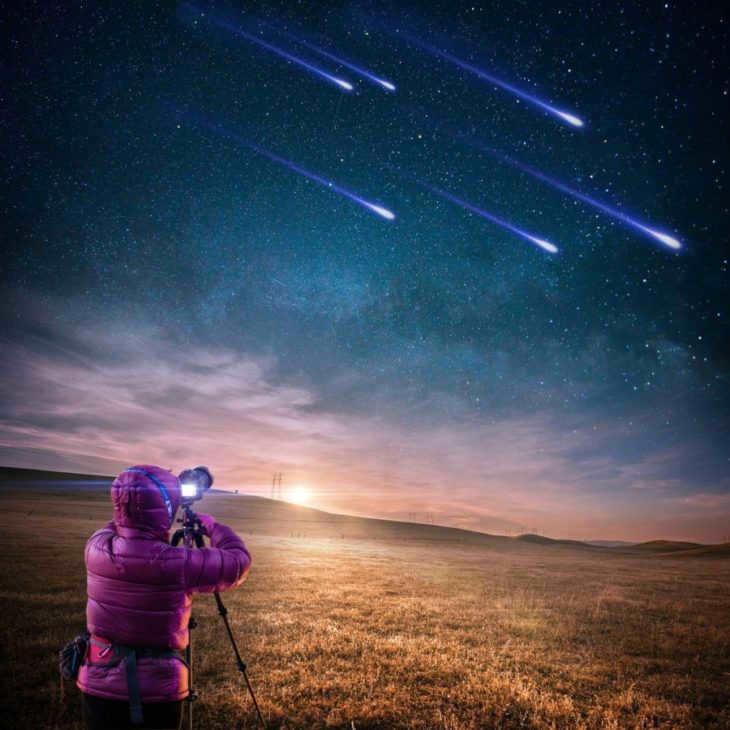
It should be noted that even small fragments burn very brightly. Take, for example, the recent Chelyabinsk meteorite that fell from the sky: video cameras captured an enormous flash that occurred right before its descent.
Meteorite Streams
Meteorites often form streams, which are stable groups that appear periodically in our atmosphere. Some of the most well-known streams include the Perseids (occurring in August from the Perseus constellation), the Leonids (occurring from November 14th to 21st from the Leo constellation), and the Quadrantids (occurring from December 28th to January 7th from the Volopassus constellation).
There are currently 64 meteor streams that scientists have confirmed, with approximately 300 others that have not yet been confirmed or denied. Meteor showers are especially spectacular when we can witness around 1,000 meteors per hour.
What are the components of space travelers?
Meteoroids, which make up the substance of a meteorite, are made up of the same elements as those found on Earth. However, their alloys and compositions are unique and cannot be found on our planet. Celestial bodies made of iron consist of iron with nickel phenocrysts.

Rock fragments are composed of a combination of nickel iron and silicate minerals, such as olivines and pyroxenes. When you observe a cross-section of these fragments, you can see chondrules, which are granular inclusions embedded within the rock.
Due to the fact that approximately two-thirds of the Earth is covered in water, meteorites that make it to the surface often land in the oceans. However, scientists are particularly intrigued by the meteorites that have penetrated the Earth’s surface to a depth of several hundred meters or even kilometers.
Astronomers meticulously study the composition of these meteorites, as it provides valuable insights into the origin of celestial bodies and the interconnected events and phenomena in the universe. By studying these ancient remnants, scientists are able to uncover remarkable discoveries about the past, present, and future of the cosmos.
Pieces of meteorites are a valuable “commodity”. Authentic fragments can be sold at international auctions for substantial amounts of money. This is why meteorite impact sites are constantly being explored by individuals known as “space treasure hunters”.
Fallen and Descending Stars
Meteorites, often referred to as “fallen stars”, are abundant in quantity. The largest known meteorite in the scientific community is Goba, measuring 3 meters in diameter and weighing 60 tons. Goba crashed into Earth 80,000 years ago in what is now Namibia.
The most extensively studied meteorite is the Allende meteorite from Mexico. It is relatively young, having fallen to Earth in 1969, yet it is also the oldest known meteorite in the solar system, with an estimated age of approximately 5 billion years.

The Murchison meteorite from Australia has gained fame not only for its size and age, but also for its abundant organic compounds. Scientists have discovered 14,000 different organic compounds in this meteorite, including 70 amino acids. Interestingly, this ancient stone is estimated to be 4.65 billion years old.
Considering the age and composition of the Murchison meteorite, it is logical to entertain the idea that extraterrestrial life may indeed exist beyond our solar system!
Can stars actually fall and where do they go?
Whenever we spot a shooting star, our immediate response is to make a wish. But is it really possible for stars to fall from the sky? And if they did, what would happen to them? Could this phenomenon occur even in zero gravity?
In reality, this notion is purely poetic and does not align with the facts. What we actually witness in such cases is an optical phenomenon caused by meteor showers entering the Earth’s atmosphere. The most notable occurrence of this phenomenon happens annually from August 12 to 14 in the northern latitudes of our country, known as the Perseid meteor shower.
What is the reason behind this phenomenon?
Is it true that stars are falling from the sky? The answer is no, what we actually witness are meteoroids, asteroids, and other celestial bodies disintegrating as they enter the Earth’s atmosphere. Those meteoroids that manage to survive this fiery descent and make it to the Earth’s surface are then referred to as meteorites. The trails left behind by these objects can be observed in the sky for a brief period of time, ranging from a few seconds to several minutes.
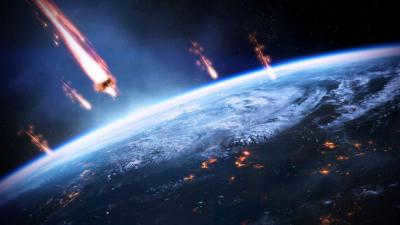
Comets orbit the Sun and leave behind a trail of fragments that eventually come together and form meteor streams. When the Earth crosses paths with these streams, it leads to the phenomenon known as “stargazing.”
What exactly are stars?
Stars are luminous balls of gas. The Sun is the closest star to Earth. Other celestial objects are located at significant distances, so when we look up at the sky, we see small glowing dots. If we compare the sizes of the Earth and the Sun, our planet is more like a tiny speck in comparison to the Sun, which has a diameter of 696,342 kilometers (with a margin of error of 65 kilometers). In contrast, the Earth has a diameter of only 12,742 kilometers. But do stars really fall? It’s difficult to even fathom what would happen if the Sun were to fall onto the Earth – it would simply incinerate within seconds.
The distinction among celestial bodies
Meteoroids are tangible entities, comprising of elements such as rock, ice, or metal. Typically, when these cosmic entities collide with the Earth, they appear as small round objects, although occasionally they can be quite sizable. They are often observable in the Earth’s atmosphere.
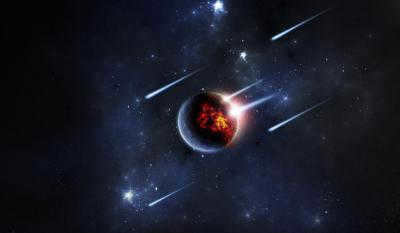
Typically, asteroids are large rocks that come from the orbits of Jupiter or Mars and enter the orbits of Earth and the Sun. They are commonly referred to as asteroids.
On the other hand, comets are composed of ice blocks that can contain various chemical compounds such as ammonia and methane. These objects are usually enveloped by a cloud-like shell called a “coma.” When a comet gets closer to the Sun’s orbit, it develops a distinctive “tail.”
What causes the glowing trail of falling space objects?
Do stars plummet to the ground? As we already know, the answer is no. However, why do space objects emit a bright light when they fall? The explanation is quite simple: when a space object, whether it be a meteorite composed of metal or stone, enters the Earth’s atmosphere, it experiences high levels of friction, resulting in it heating up to a significant temperature. It is worth noting that this is also the reason why spaceships are equipped with special protective coating, to prevent the rocket and its occupants from burning up. In some cases, larger comets may not completely disintegrate in the atmosphere and manage to reach the Earth’s surface.
The most well-known incidents of meteorite falls
Do stars descend from the heavens? No. But meteorites certainly do. Here are some of the most fascinating cases of these extraterrestrial objects plummeting to Earth:
- In 1908, a meteorite descended near the Podkamennaya River, subsequently dubbed the Tunguska meteorite. Despite numerous expeditions, the actual meteorite itself was never found, only tiny magnetite and silicate balls. The explosion’s force, however, surpassed 50 megatons, uprooting massive trees across an area spanning approximately 2 thousand square kilometers.
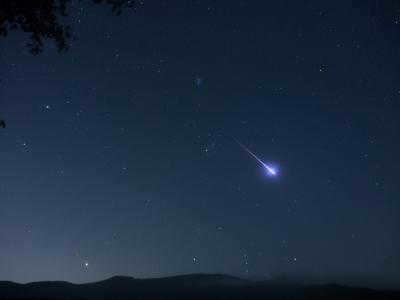
- Back in 1922, residents of Astrakhan province witnessed a massive stone falling from the sky, followed by a meteor shower. It took 50 years to discover the remnants of these celestial objects, scattered within a 25-kilometer radius from the presumed impact site. A total of 82 chondrite objects were found, ranging in size from 284 kilograms to as small as 50 grams.
- One of the largest space objects on Earth, known as the Goba meteorite, can be found in Namibia. This colossal block, weighing a staggering 60 tons, is primarily composed of nickel and iron, with a trace amount of cobalt. However, only dinosaurs had the privilege of witnessing such a remarkable phenomenon, without pondering the question of falling stars.
- In the year 1696, a massive meteorite with a weight of 5 tons crashed down in Mexico’s Chihuahua region. This extraordinary celestial body has since become the subject of extensive research and is considered the most extensively studied space entity on Earth. Interestingly, it harbors a unique mineral that is not found anywhere else on our planet, and scientists have named it pangite.
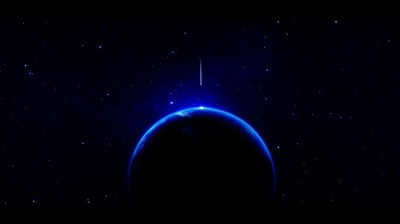
Moreover, it is fascinating to note that stars falling from the sky is not just a phenomenon that occurs in the night sky. In fact, even on the Moon, it is possible to observe evidence of meteorite impacts in the form of craters. These craters, similar to the famous ones found on Earth, are a testament to the cosmic activity that has taken place throughout the history of our solar system. However, unlike the Moon, Earth’s craters are often concealed by the vast expanses of ocean water or buried beneath layers of volcanic ash. Additionally, the effects of erosion over millions of years can also contribute to the disappearance of these craters from the Earth’s surface.
When can you witness the phenomenon of shooting stars?
Whether or not stars are actually falling to Earth, it is always a magical experience to witness a shooting star and make a wish. While it is impossible to predict the fall of individual cosmic objects, the occurrence of large meteor showers can be anticipated, especially since it has been established that such phenomena happen regularly.
One of the most consistent annual meteor showers is the Perseid shower. This celestial event takes place in the month of August, typically from the 12th to the 14th of the month. It is associated with the arrival of the Swift-Tuttle comet, which only passes by our planet once every 135 years. However, the dust trail left behind by the comet is visible on Earth every year, causing some of its particles to enter the atmosphere and create the mesmerizing display of shooting stars.
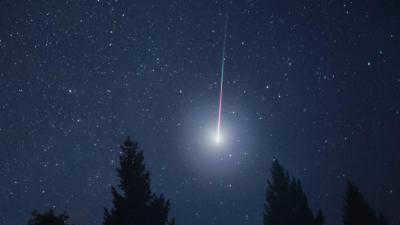
2018 Prediction
- During the period of July 28th to 30th, there will be a magnificent display of Aquaridae meteor shower near the Aquarius constellation.
- The Arietidae meteor shower is known for its long duration, occurring from May 20th to July 2nd. The peak activity can be observed on June 7th and 8th. To witness this phenomenon, you will need to wake up at sunrise and observe it for 30 minutes.
- Residents of the Northern Hemisphere will have a chance to witness the Draconids meteor shower, also known as the “star rain,” from October 8th to 10th. This event can be observed during the night with approximately 15 meteors falling per hour.
- One of the most stunning events is anticipated to occur between October 2 and November 7. The peak will occur on October 20-21. Observers will be able to witness sizable celestial objects descending from the sky, leaving visible trails behind.
However, it is important to keep in mind that in order to fully appreciate this incredible event of falling space objects, it is best to venture outside the city limits, where tall buildings will not obstruct the view and the sky will be completely open.
How enchanting are the balmy nights towards the end of summer. The air is filled with the aroma of grass and the sun-warmed earth. The radiant tails of stars occasionally streak across the sky, marking the dark expanse.
Every now and then, nature puts on this “star show” especially for romantics who believe that their deepest desires come true when stars descend to the earth.
Fortunately, when engaging in stargazing, stars do not actually descend. To be more precise, they could theoretically descend, but the appearance would be quite different. In any event, what we occasionally witness in the summer sky has no connection to these celestial bodies.
A star is a massive ball of extremely hot gas. Its dimensions are immense. The nearest star to us, the Sun, is a moderately-sized celestial entity. However, it has the capacity to encompass several Earth-sized volumes. We dare not even fathom the consequences if objects of such magnitude were to collide with our planet on a regular basis.
According to scientists, a star has the capability to “fall” into a black hole or even onto a planet. However, the phenomenon that we commonly refer to as a shooting star has a different astronomical explanation. It is incorrect to label this event as a shooting star, as this term originated in ancient times when people had limited knowledge about the cosmos.
What causes a shooting star phenomenon?
In the vastness of the universe, there is constant change. Stars are born and die, planets come and go, comets move and disintegrate. And amidst this ever-changing cosmic landscape, there is a constant flow of “building material” that travels through the universe at incredible speeds, occasionally finding its way onto the surfaces of celestial bodies.
This accumulation of cosmic “debris” includes both minuscule particles of space dust and larger objects known as meteoroids. When these objects enter the Earth’s atmosphere, they experience intense friction, causing them to heat up and emit a glowing light. This phenomenon is what we commonly refer to as a shooting star.
What is a star shower?
A star shower is a phenomenon that occurs when large comets break apart, creating a cluster of various-sized particles. These particles, known as meteoric bodies, are then scattered throughout the cosmos in a plume-like formation due to gravity.
If our planet happens to cross paths with one of these plumes during its orbit, we can witness a spectacular display in the sky known as a meteor shower or starfall.

What sets meteors apart from meteorites?
Meteoroids are typically fragments originating from asteroids and other large celestial bodies. In most cases, they disintegrate upon entry into the Earth’s atmosphere, resulting in a dazzling display known as “meteors”. However, those meteoroids that manage to survive the atmospheric burn and make it to the Earth’s surface are referred to as “meteorites”.
Meteorites can vary greatly in size. The heaviest one ever discovered by scientists weighed approximately 60 tons. The earliest documented account of a meteorite falling from the sky dates back to ancient Rome in 467 BC, as recorded by historians of that time.
The Earth crosses paths with groups of meteors at regular intervals. Each group is named after the constellation where the particles originate (known as the radiant). These particles may appear to come from a single point when viewed from Earth, but this is actually an optical illusion. In reality, the particles are moving in parallel. The illusion is due to the vast distance between the Earth and the particles.
There are various meteor streams, such as the Aquarids, Leonids, and Perseids. One of the most impressive and intense meteor streams is the Perseid stream, which can be observed every summer in the northern latitudes of Eurasia. The Earth passes through this stream for an entire month, resulting in tens of thousands of meteors per hour during that time. However, the peak activity occurs from August 12 to 14.
Perseids are associated with the comet Swift – Tuttle. The comet itself comes close to the Earth only once every hundred and fifty years, but its trail of dust particles intersects with our planet every year.
In addition to the Perseids, there are several other meteor showers that occur annually. They happen at different times throughout the year, but not all of them result in a shower of shooting stars. Some of the most impressive ones include the Taurids and Orionids, which can be observed in October and the first half of November, and the Leonids and Geminids, which occur in November and December respectively.
It is highly recommended for young men in love to thoroughly examine the timetable of celestial showers and the prediction of their strength. This fresh information can be effectively utilized to arrange the most awe-inspiring rendezvous. What could be more enchanting than presenting a lady with a shooting star and allowing her to make a wish?
Video: What causes stars to descend and how does it occur?
For those unfamiliar with the ancient belief, when a clear night sky reveals a luminous star descending from the darkness, it signifies that “someone has passed away.” This superstition originated during a period when people lacked a comprehensive understanding of the celestial realm. They believed the sky to be a solid azure dome resting upon the Earth’s surface, with tiny light sources – known as stars – affixed to it. It was thought that each individual possessed their own personal star in the sky, which illuminated upon their birth and “fell” upon their demise.
There are no shooting stars to be found. In fact, each night we witness numerous “stars” appear to “fall” from the sky, while the constellations above remain unchanged. What is the explanation for this phenomenon? The truth is that these so-called “shooting stars” are not actual stars. They are simply tiny particles of matter that barely survive the journey through Earth’s atmosphere from outer space. The scientific term for these “shooting stars” is meteors.
Currently, it is known in the field of science that there are numerous small solid particles, such as rocks, clumps, and dust, that exist in interstellar space. These particles travel in various directions and often encounter the Earth, entering our atmosphere at incredibly high speeds, reaching tens of kilometers per second. When these meteoric bodies reach a height of 150-120 kilometers above the Earth’s surface, they begin to experience air resistance, causing a compressed air “cushion” to form in front of them. As a result, the meteoric particles heat up significantly and transform into gases, typically at an altitude of 130-60 kilometers above the Earth’s surface.
These meteoric particles are primarily composed of matter that weighs only fractions of a gram.
Occasionally in the sky, one can witness not just individual “shooting stars,” but an entire “shower of stars” (Fig. 24). Naturally, there is no magic involved in this phenomenon either. This celestial event occurs when the Earth encounters not individual meteoric particles, but entire swarms of these small particles. Often, they are the remnants of former comets. During this time, dozens of fiery meteors are observed every moment. It is a truly remarkable spectacle that will be remembered for a long time!
For instance, a significant “star shower” was observed in October 1933, as well as in October 1946.
As we mentioned earlier, there are also meteor showers that occur when the Earth collides with the nucleus of a comet. The collision with the remnants of the comet Biela, for example, resulted in an especially dazzling “rain” in 1885.
Fig. 24: Illustration of a star shower (historical drawing).
In the past, people associated the phenomenon of “star rain” with superstitions and believed it to be a sign of bad things happening on Earth. They had no understanding of the causes behind this unusual occurrence and resorted to ridiculous fictions to explain it.
Today, we not only know the cause of this phenomenon, but we can also predict when meteor showers will happen in the future.
We now understand that every year, as the Earth orbits around the Sun, it encounters certain clusters of meteor bodies during specific months. For instance, from August 9th to August 14th every year, the Earth encounters a swarm of meteor particles, resulting in faint “star showers” during this time.
From our perspective on Earth, it appears that the meteoroids are flying out of the Perseus constellation, which is why we call the annual August meteors Perseids. People have been observing the Perseids for over 1000 years!
There are meteor streams that only produce abundant “star showers” once every few decades. One example is the meteor stream that comes out of the Leo constellation, known as the Leonids (from the word leo – lion). The Leonids create abundant “star showers” once every 33 years. Historians and chroniclers used to describe the Leonid fallout as extraordinary “celestial visions”. They were noted in China over 3,700 years ago.
The Lyra constellation, specifically the April meteors (April 19-22), sometimes creates brilliant “star showers”. The last notable Liridbyl rain occurred in April 1952.
Occasionally during the nighttime hours, it is possible to witness the spectacle of a star descending from the celestial expanse. According to popular belief, if one is fortunate enough to observe such a phenomenon, it is highly advisable to expeditiously formulate a wish, as it is purportedly destined to come true.
Are stars truly falling?
Thankfully, the objects that appear to be stars plummeting from the firmament are not, in fact, genuine stars. Had they been, it would have been a lamentable situation! So, what exactly are these swiftly traversing entities that grace the nocturnal heavens? It has been discovered that they are minuscule extraterrestrial rocks hurtling through the Earth’s atmosphere. As they venture too near our planet, these space rocks collide with the gaseous envelope that envelops the Earth. The resultant friction causes the rocks to become exceedingly hot, to the point where they emit a luminosity commensurate with that of an authentic star. Subsequently, just prior to their imminent collision with Earth, they disintegrate and vanish. This phenomenon, which is a marvelous display of nature’s prowess, is referred to as a meteor. Should a fragment of the meteor manage to reach the Earth’s surface, it is then designated as a meteorite. The most dazzling meteors are commonly referred to as bolides.
Can you believe it? Every single day, the Earth’s atmosphere is bombarded by hundreds of millions of meteors weighing thousands of tons! On top of that, there are also 100 tons of minuscule dust particles floating around, although they’re too tiny to be visible to the naked eye.
A Shower of Stars
There are nights when you gaze up at the sky in hopes of catching a glimpse of a shooting star, only to be greeted by not just one, but numerous bright dots streaking across the heavens. These shooting stars seem to appear and disappear in an instant. But why do we witness such a frequent occurrence of falling stars nowadays? The truth is, on these particular nights, the atmosphere is graced by the presence of several tens of thousands of meteors per hour! This phenomenon is known as a meteor shower, or you could even call it a “star shower”.
Where does the phenomenon known as the “star shower” originate from? Meteor showers are visible when Earth passes through groups of particles that are created when a comet disintegrates. As a comet approaches the Sun and warms up, it loses material. Over the course of many centuries, the gravitational forces of planets have shaped these particles into a long trail that follows the path of the comet’s orbit. Astronomers have identified numerous meteor showers, some of which occur annually and last for several hours, while others span a few weeks. For instance, during the month of August, when Earth intersects with the debris left behind by the Swift-Tuttle comet, we are able to witness the Perseid meteor shower.
Are you in need of a telescope?
If you have plans to witness the mesmerizing August starfall, don’t fret about not having a high-powered telescope. According to experts, this astronomical phenomenon is even more captivating and vibrant when observed with the naked eye. Telescopes simply lack the expansive visual range required.
We have all made wishes upon shooting stars numerous times. However, have you ever pondered where they land? What becomes of the constellations when one of the stars descends? And what causes stars to fall when space has no weight?
What constitutes stars
First and foremost, it is important to establish the definition of stars. In basic terms, stars are enormous luminous spheres composed of gas. The nearest star to us is the Sun. All other celestial bodies of this nature, located at considerable distances from our planet, do not appear in the sky as massive luminous bodies, but instead as minuscule white specks.
What Causes Stars to Descend?
Let’s begin by addressing the misconception that stars fall from the sky. In reality, what we observe as falling stars are not stars at all, but rather meteoroids that enter Earth’s atmosphere and burn up. These meteoroids are small fragments left behind by comets and asteroids. The phenomenon of a meteoroid burning up in the atmosphere is known as a meteor. If a meteoroid survives the fiery descent and lands on Earth’s surface, it is then referred to as a meteorite. The visible trail left behind by a meteoroid typically vanishes within seconds, although in some cases, it may persist for several minutes and be influenced by wind currents.
As previously mentioned, meteoroids are frequently the remains of comets. As you may be aware, comets orbit around the Sun and leave behind a trail of debris along their path. These fragments come together and create meteor streams. When the Earth crosses paths with one of these streams, we witness what is commonly known as a “shooting star”.
This occurs when the Earth’s orbit intersects with the orbit of a comet.





